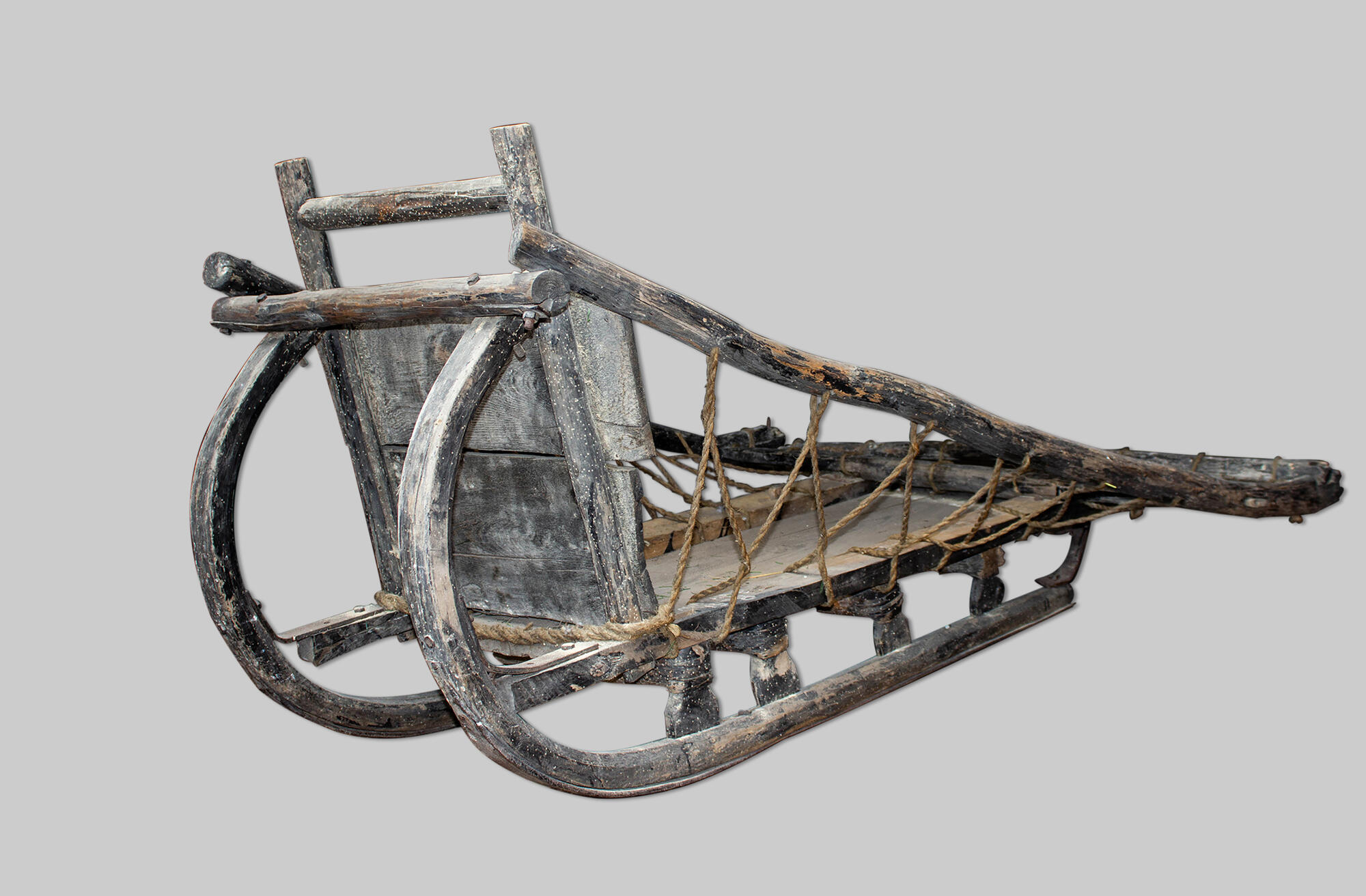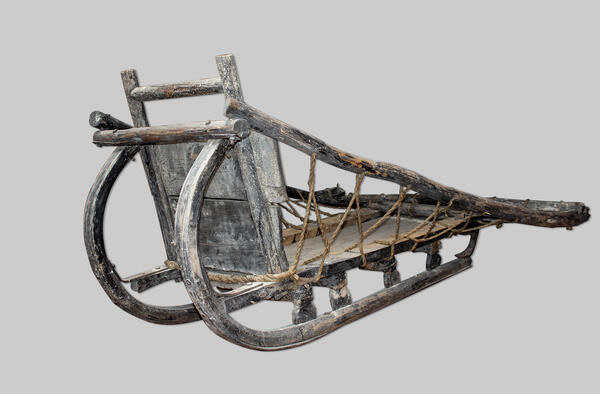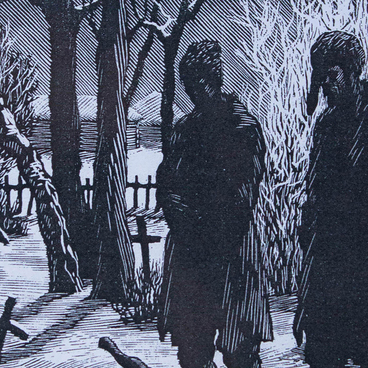This sledge type is typically referred to as ‘drovni’. However, this type of sledge has at least 10 other names in the Russian language, including rozvalni, poshevni, rospuski, and vozok. Such a sledge with a runner was the most popular means of transport among peasants for five centuries — from the 15th to the 20th century. The sledge was usually used for carrying heavy loads. The name ‘drovni’ indicates it was most often used for carrying firewood (‘drova’), but it could be used for other types of load as well.
Though ‘drovni’ and ‘rozvalni’ are synonyms, there is a difference. The drovni is the base of a sledge without a coach. Unlike the drovni, the rozvalni had wood arches diverting to sides from the front. Sometimes these arches are called ‘gryadki’. They were used for several purposes. First, they prevented the sledge from tipping over at the turn: when negotiating a turn, the sledge tumbled sideways. Perhaps this feature explains the name ‘rozvalni’. Secondly, both arches had holes drilled in them to attach hemp ropes. This was done to increase the loading space of the coach.
Long poles placed lengthwise, or ‘nashep’, were under the wooden flooring of the sledge. The poles were attached to ‘kopilya’ or ‘kopilki’ — paired vertical columns, fastening the poles to the skid. The columns were bound together with wood ropes made of thin branches. The branches were equipped with slits for the columns and then treated with steam. Richer peasants could afford sledge runners with metal undersides. They allowed to transport heavier loads and travel through a fragile snow blanket.
In medieval Russia, traveling by sledge was considered more prestigious than traveling by wheeled vehicles A richly decorated sledge was in demand on all festive occasions, especially among the highest clergymen. They were used by tsars and patriarchs and served as an attribute of funeral rites, weddings and Shrovetide ceremonies. In Russia due to poor road conditions and relative cheapness, sledges were used even in summer until the early 18th century.
Though ‘drovni’ and ‘rozvalni’ are synonyms, there is a difference. The drovni is the base of a sledge without a coach. Unlike the drovni, the rozvalni had wood arches diverting to sides from the front. Sometimes these arches are called ‘gryadki’. They were used for several purposes. First, they prevented the sledge from tipping over at the turn: when negotiating a turn, the sledge tumbled sideways. Perhaps this feature explains the name ‘rozvalni’. Secondly, both arches had holes drilled in them to attach hemp ropes. This was done to increase the loading space of the coach.
Long poles placed lengthwise, or ‘nashep’, were under the wooden flooring of the sledge. The poles were attached to ‘kopilya’ or ‘kopilki’ — paired vertical columns, fastening the poles to the skid. The columns were bound together with wood ropes made of thin branches. The branches were equipped with slits for the columns and then treated with steam. Richer peasants could afford sledge runners with metal undersides. They allowed to transport heavier loads and travel through a fragile snow blanket.
In medieval Russia, traveling by sledge was considered more prestigious than traveling by wheeled vehicles A richly decorated sledge was in demand on all festive occasions, especially among the highest clergymen. They were used by tsars and patriarchs and served as an attribute of funeral rites, weddings and Shrovetide ceremonies. In Russia due to poor road conditions and relative cheapness, sledges were used even in summer until the early 18th century.



